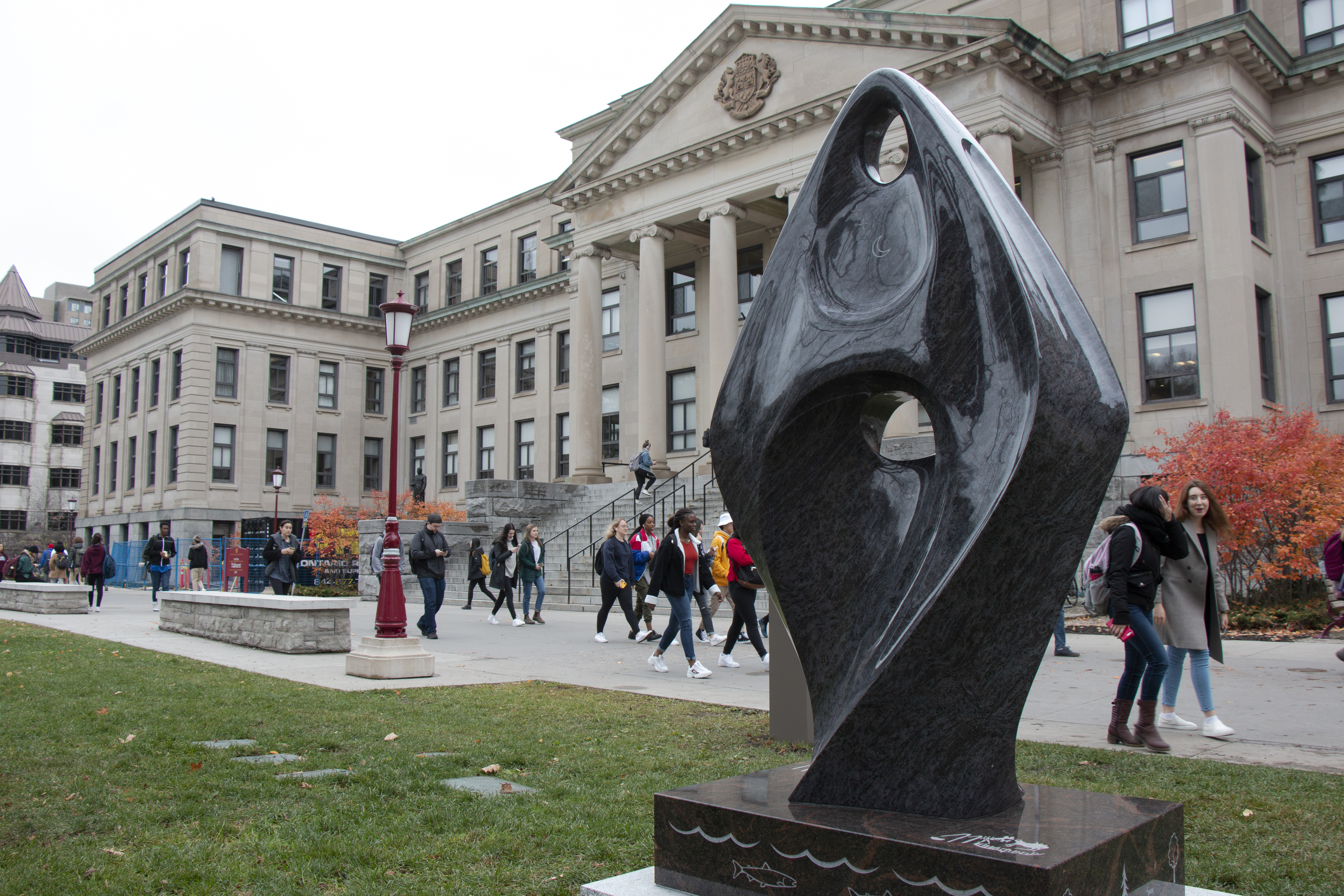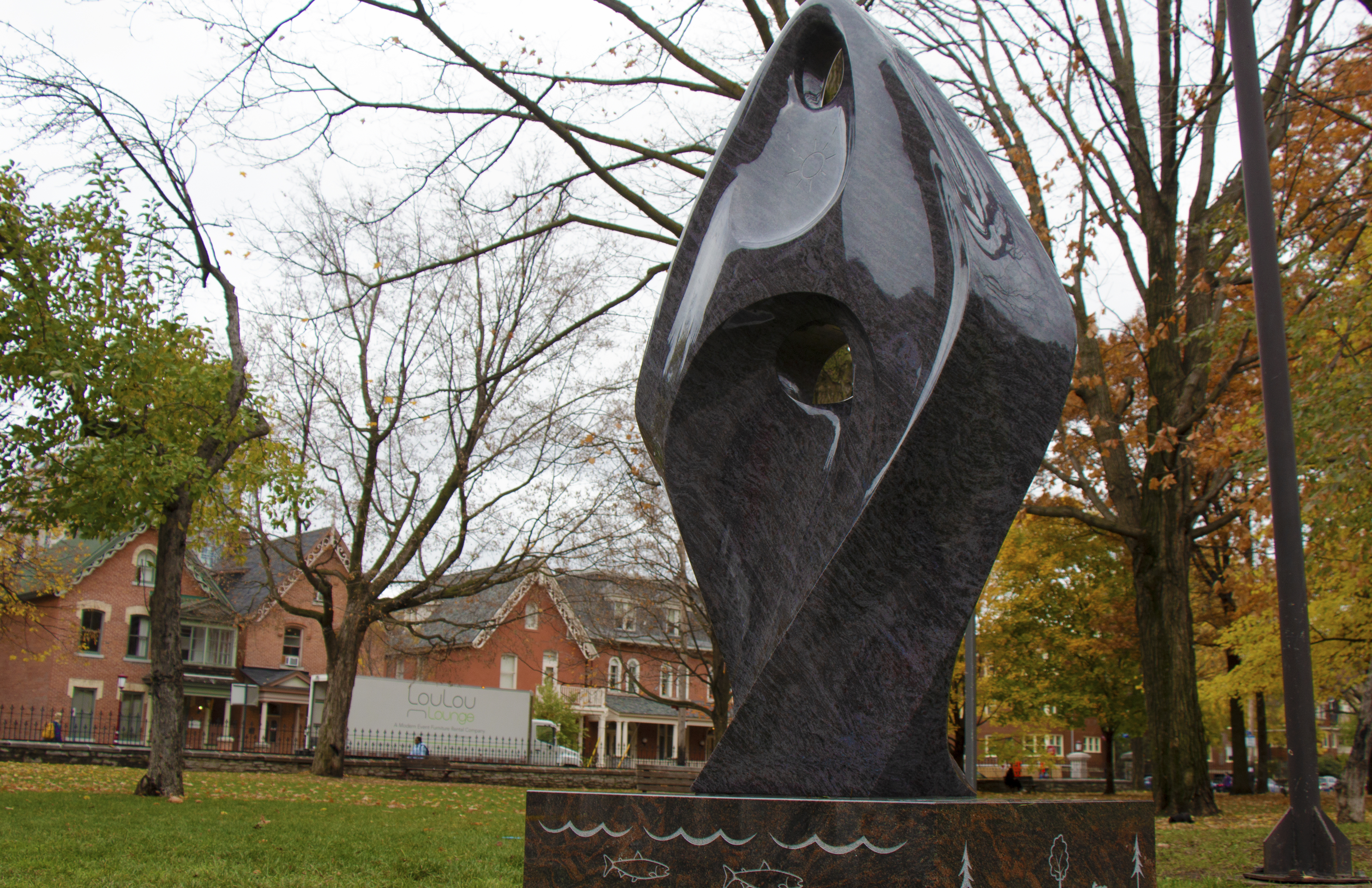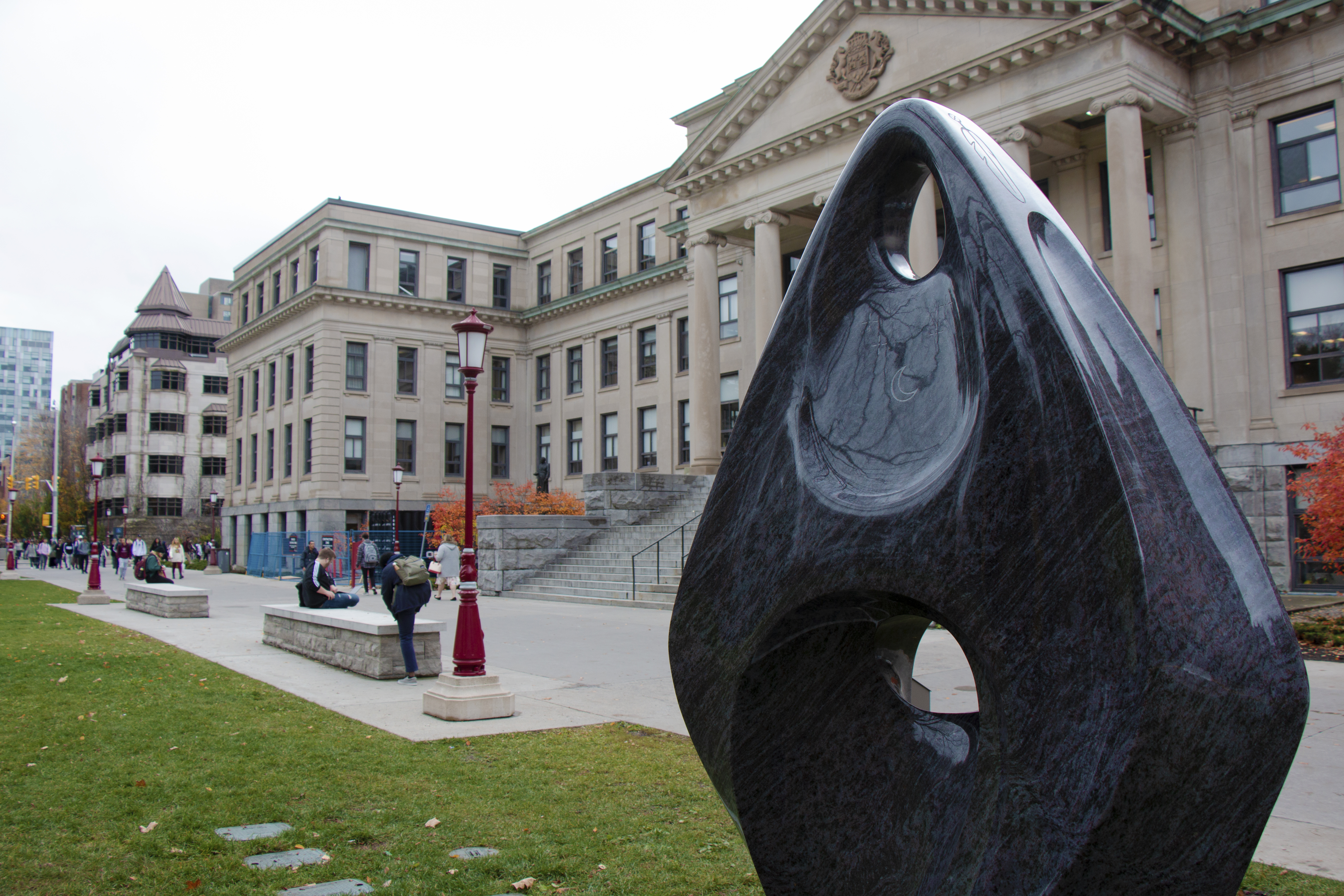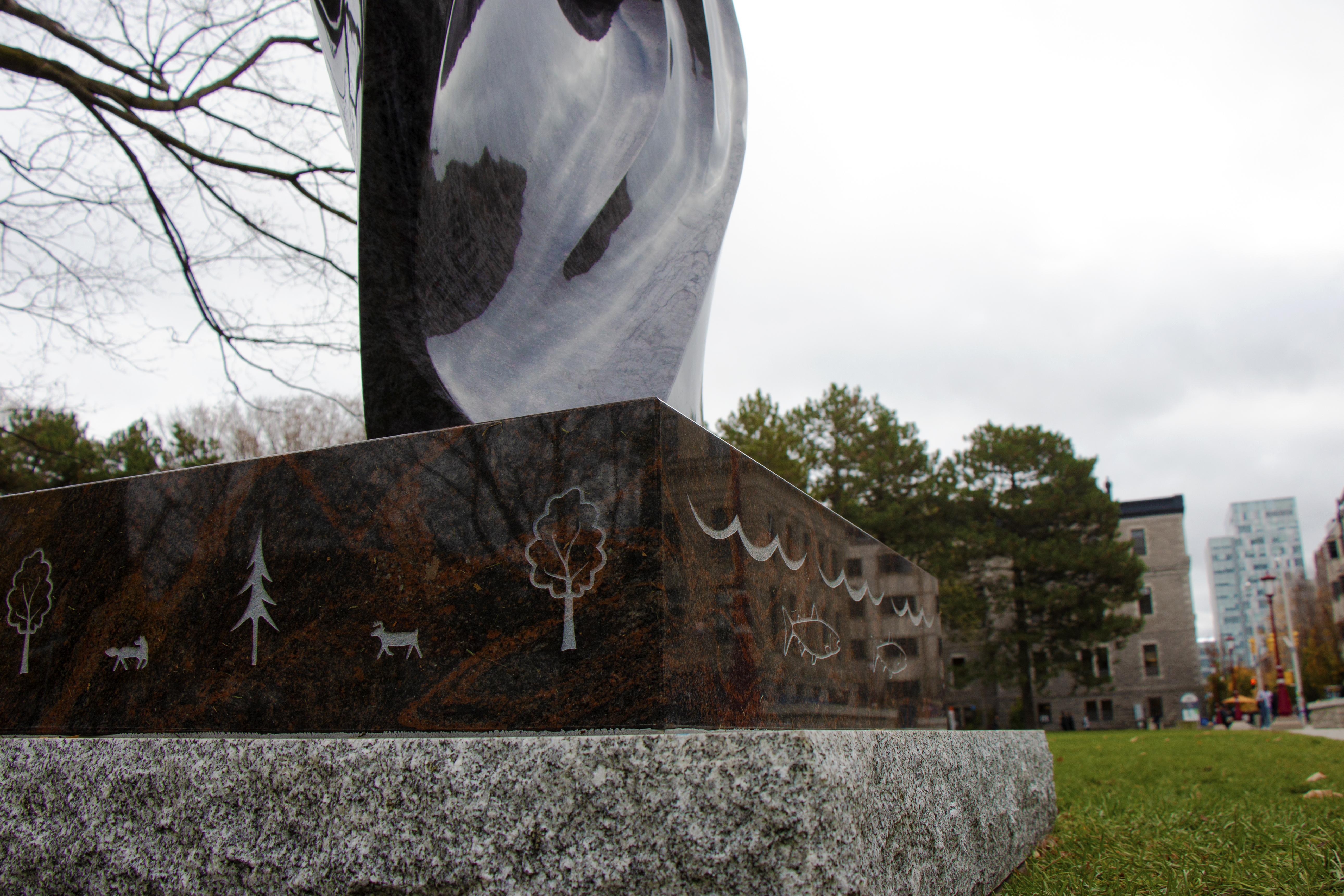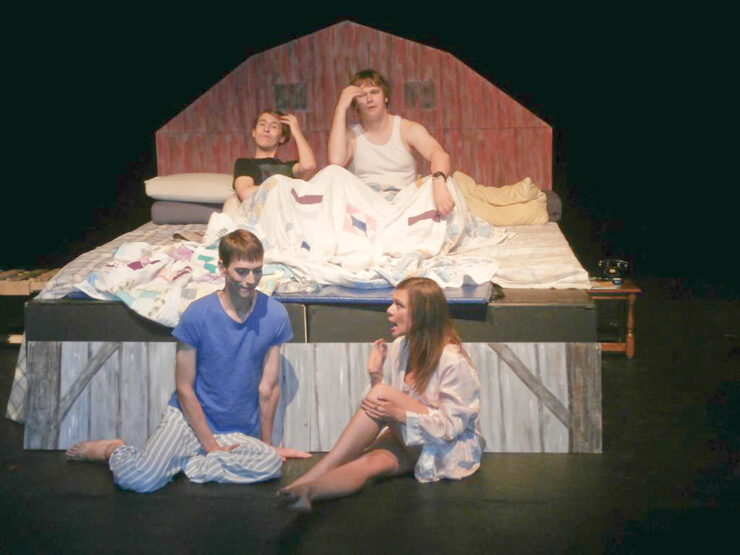Sculpture celebrates Anishinaabe peoples’ connections to this land
The University of Ottawa unveiled a new statue by David General, a member of the Six Nations of the Grand River, on Oct. 28, celebrating the long and continuing history of the Anishinaabe people on this land.
The granite statue, titled She dances with the earth, water, and sky, is located on Tabaret Lawn. The sculpture is an abstract form of a woman dancing in a shawl, and is intended to act as a permanent acknowledgement of Indigenous people on this land and campus.
A plaque by the statue states in Anishinaabemowin, English and French that “This sculpture was commissioned to represent the relationship founded on truth and reconciliation between uOttawa and the Omamìwìnini Anishinàbeg, on whose land this campus was built.”
U of O president Jacques Frémont called the statue a “work that is not only beautiful, but deeply meaningful and symbolic, as it speaks to the university’s commitment to expanding its partnership with the Indigenous community.”
“There’s always a very good reason to install new works of art on our campus, and today is a great day in that respect,” the president said.
General, an Oneida/Mohawk artist, is known for blending Indigenous and modernist styles and typically working with stone, as evidenced in his latest work. He has also worked as an ironworker, an elementary school art teacher on Six Nations, a lacrosse coach (he has been inducted into both the Ontario and Canadian Lacrosse Hall of Fame), and served as Elected Chief of Six Nations.
At the event, Frémont and new provost and vice-president academic affairs Jill Scott spoke, along with Elder-in-Residence Claudette Commanda and Anishinabe educator Joan Commanda Tenasco. The unveiling also featured music from the Ottawa River Singers pow wow drum group and dancing.
The unveiling opened with remarks by Commanda and Tenasco welcoming people of all nations and all Canadians to the unsurrendered homeland of the Algonquin people. She also reiterated the importance of the land and its connection to the Anishinaabe, the “land that we never surrendered and will always be ours forevermore.”
“We welcome all of you,” said Commanda. “We welcome you with love, with kindness and with friendship. Our prayer to each and every one of you … please never forget the Algonquin people continue to be here.”
After Commanda’s speech, Tenasco, well-known as a language educator, offered a few words in Anishinaabemowin to commemorate the new statue.
The U of O’s new provost Scott spoke of the importance of everyone finding their own way to contribute towards reconciliation, saying that “for me, it’s important to learn a few words in Anishinaabemowin and to work with Indigenous communities to support language revitalization.”
“I truly believe that when Indigenous students, staff and faculty see themselves reflected on campus and see their histories, experiences, perspectives and realities honoured in our physical environment, we will have made an important step in the right direction,” she said.
Scott also called the statue “just the beginning of the changes we want to make to our campus.”
Frémont said he hopes that the statue will become a “beloved landmark on campus.”

